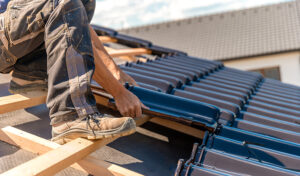An HOA capital improvement can tremendously impact the appearance and quality of life in your community. However, too many HOA boards don’t even know what a capital improvement project is. They confuse it with maintenance work and, therefore, mistakenly use the wrong funds to pay for capital expenditures. Board members should familiarize themselves with capital improvements to allow for better management.
What Is an HOA Capital Improvement Project?
Capital improvements, also known as HOA capital expenditures, are structural alterations or additions that raise the value of a property. These improvements also work to lengthen the useful life of a property through the enhancement of quality or durability. Moreover, a capital improvement in HOA communities can convert a property to serve a new purpose by going through modifications or upgrades.
What Is the Difference Between Maintenance and Capital Improvements?
 Because capital improvement projects undergo similar work, many associations mix them with routine maintenance. It is easy to confuse the two. After all, maintenance and repairs also require professional assistance.
Because capital improvement projects undergo similar work, many associations mix them with routine maintenance. It is easy to confuse the two. After all, maintenance and repairs also require professional assistance.
Capital improvements and HOA maintenance, though, are not the same. HOA maintenance refers to the regular upkeep and repair of association property. It’s preventive maintenance that seeks to restore the original condition of an asset to prevent deterioration. Regular maintenance ensures assets reach their anticipated useful life.
Meanwhile, HOA capital improvements involve more significant changes or additions. They raise the overall value of the homeowners association’s property. Capital improvements do this by making it even better than its original or current state.
What is an example of capital improvement?
Replacing the entire roof of a clubhouse is a capital improvement, whereas applying a new sealant over the clubhouse roof falls under maintenance. Adding a new patio or deck to a building is a capital improvement, whereas repairing the fence of an existing patio is simple maintenance or repairs. Converting a parking lot into a landscaped common area is a capital improvement, whereas trimming trees and hedges is maintenance work.
The Benefits of Capital Improvement Projects for HOA Communities
Many HOA boards feel apprehensive about taking on capital improvement projects, especially larger ones. This is completely understandable, considering the amount of time, work, and resources an association will need to turn such projects into reality. Capital improvements, though, come with real benefits, too.
For Appearance and Lifespan Purposes
Capital improvements can extend the lifespan of structures. Even with proper and frequent maintenance, a property’s components are still subject to deterioration over time. It will eventually come to a point where replacements or renovations are necessary.
Roofs, for instance, have a standard lifespan of 15 to 25 years. Throughout these years, a roof will need routine maintenance and the occasional repair. However, once it reaches the end of its useful life and is beyond repair, it will need to be replaced entirely.
Capital improvements can also elevate the appearance of the community. There is no doubt that the visual appeal of a neighborhood plays a key role in homeowner satisfaction. A community with a poor appearance can also deter buyers. If your clubhouse or pool looks outdated, perhaps it is time for a renovation.
For the Enhancement of Property Values
Property values should be a top consideration for homeowners associations. After all, HOAs have the primary objective of preserving property values. Plus, homeowners want to maintain the value of their properties and protect their investments.
Capital improvements can promote property value enhancement. When you add amenities or renovate existing ones, you can increase curb appeal and resident satisfaction. Both of these factors can have a direct impact on property values. Capital improvements can keep your community current and modern even as the decades pass.
For a Higher Quality of Life and Resident Satisfaction
If you want to raise the quality of life in your association, capital improvements can be a great way to accomplish that. Adding new amenities or updating existing ones can give residents a better experience in the community. Even the smallest of projects can significantly influence how residents perceive their surroundings. And, when you raise the quality of living in your HOA, resident satisfaction is bound to shoot up with it.
Funding HOA Capital Improvements
 In general, homeowners associations maintain two major accounts: an operating fund and a reserve fund. The operating fund is used to pay for day-to-day expenses or expenses that come up regularly. These include insurance premiums, office supplies, and management fees.
In general, homeowners associations maintain two major accounts: an operating fund and a reserve fund. The operating fund is used to pay for day-to-day expenses or expenses that come up regularly. These include insurance premiums, office supplies, and management fees.
In contrast, the reserve fund is used to pay for unanticipated costs and major replacements/repairs in the future. Associations fund reserve accounts with the help of a reserve study. The reserve study determines how much an HOA needs to have in its reserves at any point in time to cover the cost of major replacements or repairs once an asset reaches the end of its useful life. Sometimes, associations also use the reserve fund to pay for emergency expenses.
How do homeowners associations obtain funding for HOA projects?
If the capital improvement is a major repair or replacement covered in the reserve study, then the reserve fund can pay for the expense. Some capital improvements are structural additions instead of repairs or replacements. For instance, an HOA may decide to construct a new tennis court. The cost of such a project would normally come from a separate fund known as the HOA capital improvement fund.
Keep in mind that not all associations maintain a capital improvement fund. Thus, these associations charge a special assessment or increase regular dues to pay for capital improvements.
Sometimes, capital improvements are privately funded. For instance, a homeowner may donate money to the association to install new playground equipment.
Finally, many homeowners associations take out a bank loan to fund an HOA capital improvement. This loan will help the community pay for construction over a long period without skyrocketing monthly dues. However, it’s best to obtain a loan only if the HOA can pay for it and when interest rates are relatively low.
What Is an HOA Capital Improvement Fee?
A capital improvement fee is a fee that an HOA charges when a home is sold. Typically, associations charge this to the new homeowner as a buy-in fee of sorts. The dollar amount can vary from one association to another. However, new owners can expect to pay the equivalent of one year’s worth of regular dues to cover the cost of this fee.
It is important to note that not all HOAs collect a capital improvement fee. And in some cases, a buyer may be able to negotiate with the seller to pay this fee as part of the closing costs.
Does the HOA Board Need Membership Approval for Capital Improvements?
Whether or not the HOA board needs membership approval for capital improvements depends on the association’s governing documents. Normally, boards don’t require membership approval to complete common area repairs and replacements. After all, board members have a fiduciary duty to ensure the maintenance of common areas.
While this does not apply to all HOAs, it is common for the CC&Rs to require membership approval if the capital improvement is the addition of a new amenity (i.e., installing a new playground or pool). Approval may be necessary, though, if the board wishes to levy a special assessment to pay for the improvement.
For example, in California, Civil Code 5605 requires HOAs to obtain membership approval for special assessments that exceed “5 percent of the budgeted gross expenses of the association for that fiscal year.” Other states may have similar provisions in place, so it is important to check your state laws. Likewise, an association’s governing documents may have similar requirements.
Are Capital Improvements Tax-Deductible?
Generally, there are tax breaks for HOA capital improvements. However, the homeowners association needs to declare them in the community’s tax return forms. To understand all the requirements for deductible repairs, homeowners associations can refer to Section 162 of the Internal Revenue Code.
In addition, there are federal tax incentives for homeowners associations that use energy-efficient appliances and green building materials. It’s best to check with the state to ensure the HOA gets all the tax breaks they can while funding for HOA projects.
The Bottom Line
Clearly, an HOA capital improvement has plenty of benefits. Capital improvements enhance appearances, extend lifespans, boost property values, raise the quality of life in the community, and increase resident satisfaction. Because of this, your association should seriously consider capital improvement projects.
Clark Simson Miller provides expert HOA management services, including assistance with capital improvements. Call us today at 865.315.7505 or contact us online to request a proposal!
RELATED ARTICLES:
- What Is HOA Capital Contribution?
- What Is An HOA Initiation Fee? Is Charging Homeowners Legal?
- 6 Factors To Consider When Choosing An HOA Reserve Study Company

